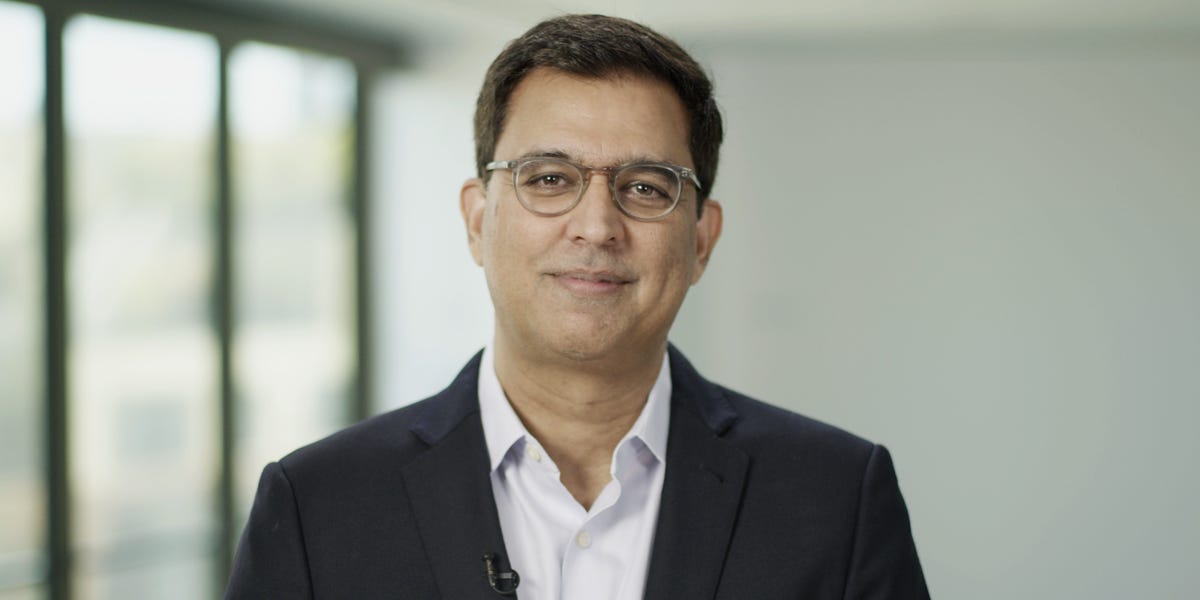It’s been three decades since Visa introduced AI to its tech stack, but by the end of the year, there won’t be a job or position that doesn’t incorporate the technology.
Visa relies on AI for mission-critical tasks like processing payments, detecting fraud, and securing its massive network infrastructure. It has more than 300 AI models that are live and operating. The payments giant has spent more than $3 billion on AI in the past 10 years and one of its tools used to monitor payments in real time helped prevent $27 billion in fraud in 2022.
It’s now licensing generative AI software from OpenAI and will spend hundreds of millions each year on its AI budget and hire thousands over the next two years, Rajat Taneja, president of technology at Visa, told Insider.
“AI is going to be a huge part of how we grow, but it’ll also be part and parcel of everybody’s work,” Taneja said. “That’s a big part of how we are going to think about the future, where it’s assisting you in almost everything you do, whether it’s marketing, finance, client services, or coding.”
Visa is going all-in on generative AI for its employees
The company has licensed a private version of GPT-4 that runs on Microsoft Azure and incorporates Visa’s internal data. The payments company has opened the tool to 13,000 employees since February with guidelines on using it and the underlying data. It aims to roll it out to the rest of its workforce by year-end.
Taneja himself used it recently to revamp a job posting for an AI role, using ChatGPT to rewrite the job description, draft interview questions based on the position, and then ask the AI for the ideal answers.
Visa continues to experiment with similar AI models, like Meta’s AI model Llama 2 and those from French-American company Hugging Face, Taneja said.
Visa’s engineers are leveraging AI to write code, and while it’s not perfect, more AI-generated code is being used each week, with about half of the code being approved in some cases. The idea is that engineers will direct and supervise models and use them as an “assistant coder,” somebody who never forgets anything, who is trained on the latest technologies, and who continues to know more every single day, Taneja said.
Not only will AI change how Visa employees work, but it’ll push the firm to grow its headcount too. There are more than 2,500 technologists who build Visa’s data and AI platforms and services, but the firm will look to hire 2,000 more people in the next few years to carry out its AI road map.
How Visa is using AI to scale risk management and cybersecurity
Even though Visa first used AI in 1993, it wasn’t until 2014 that Visa rebuilt its core data platform and started applying AI across the business and to maintain operations.
Every second, Visa processes up to 76,000 transactions. In the blink of an eye, Visa must connect several parties to authorize transactions while managing risk. Speed and security are critical. And AI is necessary for this to happen in real time, the way consumers have come to expect, Taneja said.
The payments firm uses AI to ensure its systems are up and running, for example, identifying if a cable or fiber has been cut along its 24 million-mile telecommunications network.
Visa introduced AI models that ingest billions of data points every day to train on, learn patterns, and identify any cybersecurity or payment-security threats. It uses AI to continuously upgrade its tech stack, with Visa making a thousand software changes and updates on some days.
It protects cardholders against criminals signing into their accounts through AI by knowing how a specific customer types in their user ID and password. Biometric behavioral analytics will trigger AI to step up authentication if the models think someone other than the customer is typing in the credentials, even if the ID and password are correct and the IP address and device are recognized, Taneja said.
AI has been indispensable for Visa to offer clients and customers reassurance and reliability, Taneja said. “If someone is buying a subway ticket or paying for groceries or buying medicine or having a cup of coffee, then in the event there is a problem going on, Visa’s AI systems will continue to work in a way that prevents fraud, catches counterfeits, and catches any ATM withdrawal attacks,” he added.
Read the full article here





